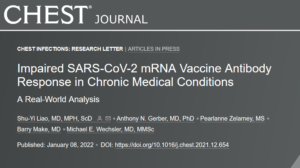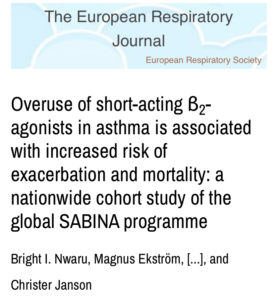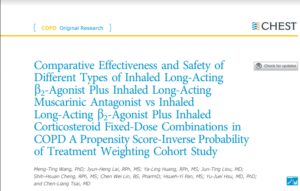
This month in our journal club we discussed an application of the FENO (fractional exhaled nitric oxide) test in asthma.
Nitric Oxide (NO) is a gas normally found in exhaled breath and is usually produced at a low level by upper and lower airways. It has numerous regulatory roles, including vasodilatation, bronchodilation, and it also serves as an inflammatory mediator. It contributes to antimicrobial defense and ciliary function. Within airways affected by asthma, the type 2 cytokine IL13 upregulates inducible NO production. Increased NO production in turn promotes type 2 inflammation, and potentially contributes to airway remodeling. This process is characteristic of asthma.
The measurement of FENO in breath provides a non-invasive indirect measure for type 2 inflammation in asthma.
FENO can play a role in the initial diagnosis of asthma. A number of studies reported correlation between FENO and bronchial hyperresponsiveness. It was suggested that FENO can be used in conjunction with current diagnostic testing with the advantage that it can help identify specific asthma subtypes.
For patients with established asthma, measurement of FENO can help predict response to inhaled corticosteroid (ICS) treatment in both ICS-naive patients and those receiving established ICS therapy. Increased levels of FENO, despite prescribed treatment, has been linked to high risk of exacerbations and sometimes can be associated with suboptimal adherence to prescribed treatment.
In addition FENO can facilitate safe stepping down of ICS therapy in patients with well-controlled asthma. It can also help choose the right biological agent for those patients with severe asthma despite maximal inhaled therapy.
At this time the role of FENO in asthma continues to evolve. The results should be interpreted in the proper clinical context in conjunction with other diagnostic tests and clinical assessment. FENO can be used to support the diagnosis of asthma, to predict response to ICS therapy, to monitor adherence, to predict future risk of exacerbations, and to facilitate choice of biological therapies.
For the full article, follow the link: https://journal.chestnet.org/article/S0012-3692(21)04109-X/fulltext
Published: October 2021




